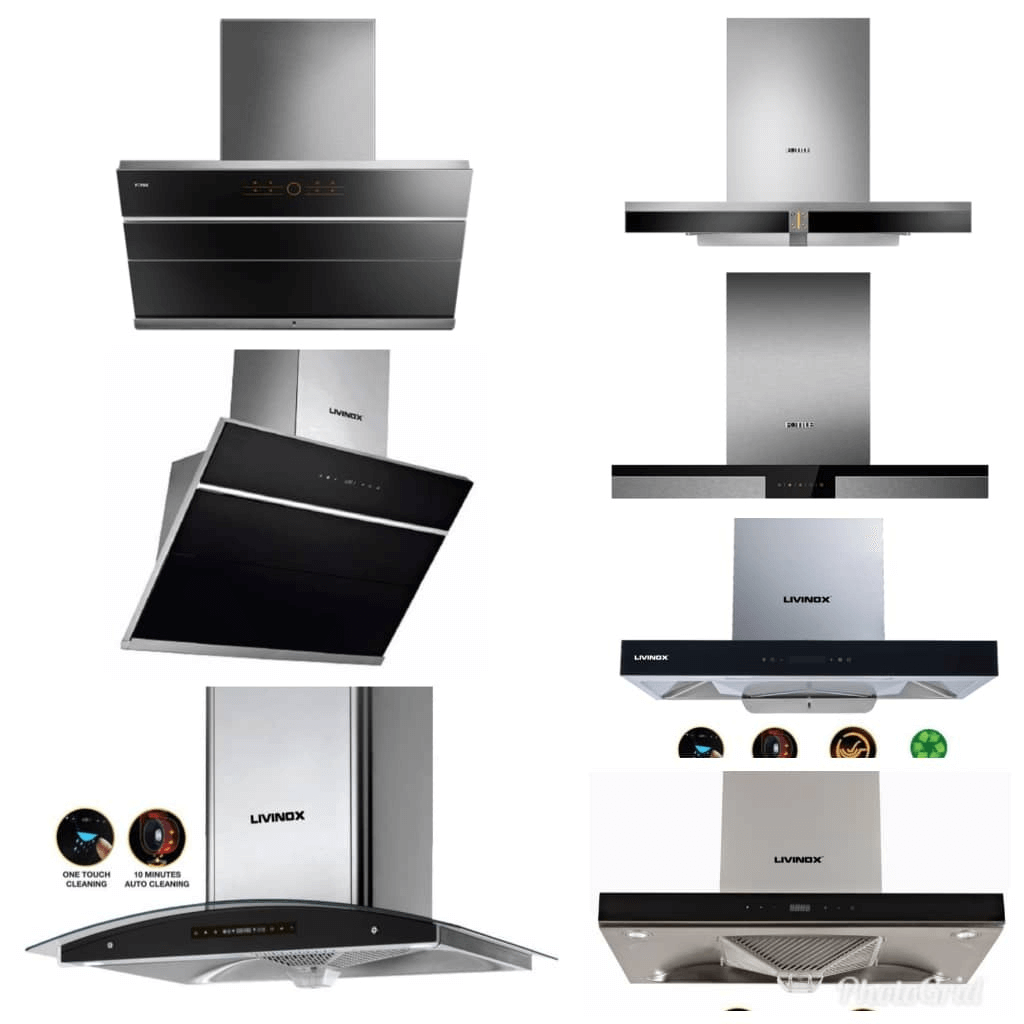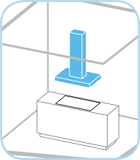https://www.facebook.com/EuwayElectrical/ 25 & 25A, Lebuh Lapangan Siber 1, Bandar Cyber, 31350 Ipoh, Perak .
All images and data are taken from the internet , if any copyright infringement involved , please leave a message . Thank you.


 |
This type of installation provides the greatest benefits for eliminating unpleasant odors. To install a hood in ducted mode, it is necessary to connect a duct from the air outlet of the hood to a wall discharging on the outside. In addition to expelling unpleasant odors, this mode also allows the air conditioning in the environment to be expelled. |
 |
In this mode the hood draws in the air from the kitchen, eliminates grease and unpleasant odors through a special filter and releases it back into the room. This type of installation is much easier as no duct is required. To ensure proper functioning over time, the user must carry out regular maintenance, such as replacing the odor filter, as well as the grease filter (if synthetic), or washing (if metal). |
 |
Depending on the type of installation, the hood activates different air filtering modes. A ducted range hood filters only grease generated during cooking through a grease filter, whereas odors are not expelled but discharged outside together with the air drawn in from the kitchen. The grease filter can be of a synthetic material or metal and should be cleaned (or replaced if a synthetic material has been used) on average every month. . In the recirculating mode, the hood filters grease generated during cooking through a grease filter, whereas odors are filtered through the odor filter. The odor filter, traditionally composed of activated charcoal, should be replaced on average every 2/3 months. |
The choice of the aspiration power of the hood (airflow rate) generally depends on the size of the kitchen and cooking methods. The airflow rate is expressed in cubic meters per hour (m3/h), and indicates the amount of air that the range hood is capable of absorbing when working at the maximum speed. To determine what your needs are multiply the kitchen dimensions by ten. The result indicates a suitable airflow rate.
Example: if the kitchen is 3.00 meters wide, 5.00 meters long, 2.70 meters high, the calculation will be as follows (3.00x5.00x2.70) x 10 = 405. Where 405 represents cubic meters/hour. In this case a range hood with an airflow rate of 400 m3/h (or higher) can guarantee the adequate airflow rate.
Most range hoods are going to be loud, at least on the highest settings. When we looked over the reviews of various models, one of the most common complaints across all of them was the noise they make.
Some models at least aim to be more quiet than usual – they still make some noise, but not as much. If you have a chance to visit a showroom, you can get a feel for how loud or quiet a model is in person. If that’s out of your reach, customer reviews are probably your best bet for figuring out what to expect from the noise of your vent hood.
Naturally, you’ll want a vent hood that coordinates with the look of your kitchen and speaks to your personal taste. So you’ll want to consider the various finishes available on the market and the maintenance involved in keeping them clean. Things like, a brushed or shiny finish, the material choice, i.e., stainless steel or brass, etc. You’ll also want to keep in mind the overall look, meaning whether or not it’s modern or traditional for example, or if it fits nicely with your home’s general architectural style. But if you want a range hood that adds something a little extra to the visuals of the space, then many brands provide options that are likely to strike your fancy.

These are some of the model from our shop , for more other model and information please visit us , EUWAY ELECTRICAL ,Ipoh .
Like almost anything else you purchase for the home, cost can vary widely. Size, power, materials and special hood features like heat sensors, automatic shut off and type of built-in lighting will all affect the cost of the hood. Do your research and compare pricing online before you go to the store so you can get an idea of what you can expect to spend. Don’t forget to factor in installation into the equation. This may be a job best left to the experts. Just remember that the labor and materials, like connectors and fittings, can quickly add up to more than the cost of the hood itself.
 |
Under Cabinet Range HoodsUnder cabinet range hoods are one of the most common types you’ll see. They’re an affordable choice that makes sense with many types of kitchen designs. The vent hood is installed under your cabinets and above your stove or range, ideally spanning the length of the stove so it can capture all the heat and smoke as it rises and before it reaches your cabinets. Under cabinet range hoods are relatively easy to install and cost less than many of the other types of kitchen hoods. You can find some that are stylish and others are mostly designed to be functional without drawing much notice. Some under cabinet models will include ducts that transport the smoke and particles out of your kitchen to outside, while ductless versions will recirculate the air into the kitchen. Models with ducts are more effective, but cost more and will be more difficult to install. |
 |
Wall Mount Range HoodsSome ranges are installed in spots where there aren’t any cabinets over them. In that case, under cabinet hoods obviously cease to be an option and many homeowners consider wall mounted hoods instead. Wall mounted range hoods are sometimes called wall-mounted chimneys, because they frequently resemble a chimney in shape. They’re wider on the bottom, ideally stretching the full length of the stove (as with under cabinet models) so they can capture everything that rises up, but narrowing to the vent that resembles a chimney. They typically cost a bit more than under cabinet vent hoods, but many people prefer the look of them and they’re the more logical choice to install over a stove that’s located in a spot without cabinets directly above it. |
  |
Island Hoods or Ceiling MountedIsland hoods are very similar in design and appearance to wall mount chimneys, but are designed for installation in spaces where there isn’t a wall to attach the hood — so over a stove installed in an island, basically. Instead of the vent connecting to ducts in the wall, it does so in the ceiling and vents out the smoke that way. These tend to be on the more expensive side, but many of them are designed to be especially beautiful and sleek looking. Many remodelers may choose to go with an island vent hood for aesthetic purposes, but for anyone planning to have their stove as part of an island in the middle of the kitchen, they’re the most logical choice |
 |
Downdraft Range HoodsDowndraft hoods are generally regarded as the least effective option on this list, but they’re handy for those who want their range hood to stay visually out of the way whenever not in use. They’re connected to ducts beneath the floor, so work to move the smoke and air out in a downward direction (against its natural flow up), which is understandably more difficult and probably why they’re widely regarded as less effective than other options. |
 |
Under-Cabinet Range HoodsOne of the more common and compact options for range ventilation is the under-cabinet hood. This sort of range hood is mounted underneath of the cabinets that are positioned directly above your stove. The design of the required venting system is simple for the most part and versatile enough to be able to go with any kitchen style. In order to provide ventilation, the duct work for the hood is either placed behind the hood out of an exterior wall or up through the cabinet above the hood. This can take away any storage you may want to utilize in your cabinet, but for the most part this type of hood does end up saving a little bit of wall space. |
https://www.facebook.com/EuwayElectrical/ 25 & 25A, Lebuh Lapangan Siber 1, Bandar Cyber, 31350 Ipoh, Perak .
All images and data are taken from the internet , if any copyright infringement involved , please leave a message . Thank you.